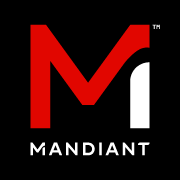Threat Intelligence Platforms
Threat Intelligence Platforms Overview
Best Threat Intelligence Platforms include:
Anomali ThreatStream, Palo Alto Networks AutoFocus, VirusTotal, Mandiant Advantage Threat Intelligence, Mimecast Threat Intelligence, Recorded Future, SolarWinds Threat Monitor, Check Point ThreatCloud, McAfee Threat Intelligence Exchange, and Huntress.
Threat Intelligence Products
(1-25 of 65) Sorted by Most Reviews

AlienVault® Unified Security Management® (USM) delivers threat detection, incident response, and compliance management in one unified platform. It is designed to combine all the essential security capabilities needed for effective security monitoring across cloud and on-premises…
Key Features
- Event and log normalization/management (9)72%7.2
- Custom dashboards and workspaces (9)72%7.2
- Centralized event and log data collection (6)69%6.9

Splunk Enterprise Security (ES)
Splunk Enterprise Security (SIEM) is the company's flagship SIEM product, offered as a premium service to subscribers of Splunk Cloud or Splunk Enterprise.
Key Features
- Centralized event and log data collection (61)94%9.4
- Correlation (62)90%9.0
- Custom dashboards and workspaces (63)88%8.8

CrowdStrike Falcon
CrowdStrike offers the Falcon Endpoint Protection suite, an antivirus and endpoint protection system emphasizing threat detection, machine learning malware detection, and signature free updating. Additionally the available Falcon Spotlight module delivers vulnerability assessment…
Key Features
- Malware Detection (32)95%9.5
- Centralized Management (32)93%9.3
- Infection Remediation (32)92%9.2
Learn More About Threat Intelligence Platforms
What is a Threat Intelligence Platform?
A Threat Intelligence Platform helps organizations aggregate, correlate, and analyze threat data from multiple sources in real time to support defensive actions. A Threat Intelligence Platform can be a cloud or on-premise system to facilitate management of threat data from a range of existing security tools such as a SIEM, firewall, API, endpoint management software or Intrusion Prevention System. The primary purpose is to help organizations understand the risks and protect against a variety of threat types most likely to affect their environments.
Threat intelligence platforms usually utilize two main sources of data. The first is a vendor-supported threat intelligence library. These libraries record all of the existing or known threats, including their signatures, risk factors, and remediation tactics. The second is the business’s existing security stack, which provides the threat intelligence platform with real time data. The platform then analyzes the organization’s data against the repository of known threats and possible signifiers to identify potential or active threats.
A key aspect of threat intelligence platforms are their automation. Leveraging internal and external data sources at high volumes are beyond the scope of any team’s manual analysis. Instead, threat intelligence products use automated policies and AI to identify threats without human intervention. Once it has identified a threat, the tool will alert stakeholders to said threats. This can lead to a higher volume of false positives/noise, but is still more efficient than manually managing and analyzing security data in the first place.
Threat intelligence capabilities can be found in a variety of products. Some vendors have focused on inserting threat intelligence into existing endpoint security and SIEM products. More recent developments in the SOAR space have also emphasized connecting threat intelligence directly to automated remediation actions. There are also a range of point solutions that specialize in deep threat intelligence libraries and robust analytics engines. These point solutions should also be able to integrate easily with the rest of an organization’s security technology stack.
Threat Intelligence Platforms Features & Capabilities
- Data feeds from a variety of different sources including industry groups
- Data triage
- Alerts and reports about specific types of threats and threat actors
- Analysis and sharing of threat intelligence
- Normalization and scoring of risk data
Threat Intelligence Platforms Comparison
Consider these aspects of threat intelligence platforms when comparing different options:
- Suite vs. Point Solution: Is each product a standalone solution for threat intelligence, or part of a larger endpoint or network security package? Standalone solutions are more likely to be best-of-breed, while larger suites may come with better pre-built integration into other security functions within the platform. Suites may also be preferable if the organization is looking to restructure its broader security posture, rather than just adding threat intelligence capabilities.
- Integrations: How well does each product integrate with the rest of the organization’s tech stack, particularly other security systems? Threat intelligence platforms should at a minimum have prebuilt integrations for the other security systems the organization uses, or case studies speaking to the ease of integration in similar use cases.
- Alert Management: What impact does each platform usually have on false positive rates? Ensure that products on the shortlist won’t add an unexpected workload just from managing alerts long term. Reviewers will frequently highlight how well, or poorly, given products perform in this area.
Start a threat intelligence comparison here
Pricing Information
Threat intelligence pricing is often a subscription to multiple data feeds, with tiered pricing based on number of users. Data fees vary in cost from about $1,500 and $10,000 depending on the number of feeds.



















